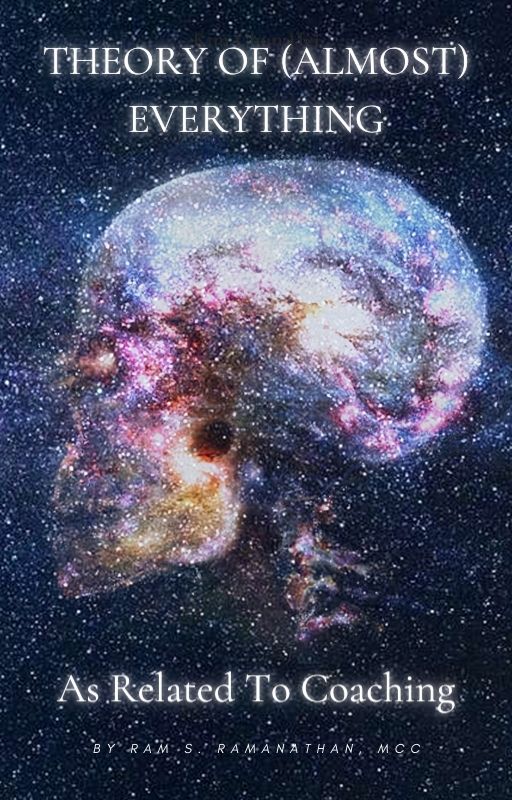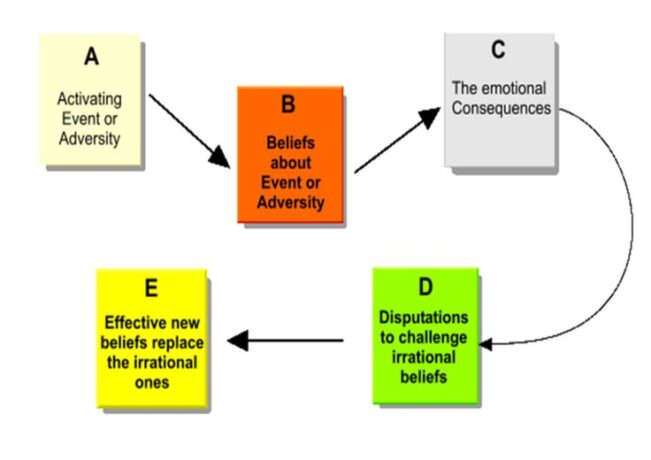At the core of all masterful transpersonal coaching is the generative possibility of partnering clients to discover their true superior Self of purpose and potential.
Ram S. Ramanathan
Founder, Coacharya
Coaching has no nobler purpose than this. Discovering one’s true Self, in synchronicity with one’s systemic alignment with the Universe, and as a result, one’s purpose and potential in life is the dream of the spiritual seeker steeped in ancient wisdom. The Vedic tradition called this the prarabda karma. This term implies that our birth in this lifetime is not an accident. Our present life on earth is the result of the experiential memories of multiple lives, births, and deaths. This carries a template of our purpose for this life, one that we can unveil if one seeks with conviction.
Once known, this template simplifies many things for all of us. We are no longer alone. We are no longer drifting and confused. Our lives have a meaning, one we can influence, whatever may seem to be the odds against that. Understanding our purpose fulfills us. Whatever destination that the journey to this purpose leads to would be acceptable. The purpose of this journey is not the destination, only the bliss of the Hero’s Journey.
Unveiling this purpose is not the destination or journey of this blog. I teach that separately as a process, which requires commitment. In this blog, I outline what I have experienced to be the blocks to realizing that purpose and to be in bliss, and posit well-known psychological and spiritual theories that help in that understanding.
Pierre Teilhard de Chardin, S.J. said ‘We are not human beings having a spiritual experience. We are spiritual beings having a human experience.’ This has always been true. The mahavakya of the Veda reiterated this truth again and again. It’s our inability to believe that we are spiritual and energy beings, which makes us feel inadequate and therefore unable to realize our full potential as spiritual beings. As Marianne Williamson so poignantly said, ‘Our deepest fear is not that we are inadequate. Our deepest fear is that we are powerful beyond measure’. We invalidate ourselves with this fear. This invalidation is the root cause of our sorrows, going beyond Buddha’s noble truth that desire alone is the root cause of our sorrows. Once we understand our power, we learn to accept who we are. In that state, our desires are no longer selfish. They are systemically selfless.
Download the PDF / ebook version of this article
Coaching & Healing
I spent many years practicing spiritual healing techniques such as Reiki and others. They all had something common with coaching. They were non-solution-oriented journeys. They are not-knowing journeys. They all had a beginning as the intent and an end of sorts in getting well emotionally and physically, which in turn empowered the individual to greater journeys. In addition, they were systemic. The healer fully believed in a greater systemic source that was the healer, not the healer alone.
In many thousand people I met in this healing journey, one factor was common in multiple issues of grief due to loss of a loved one, or one’s faculties, or wealth, or position, or the fear of an anticipated loss, or anxiety about the possibility of a loss. They were about losing something one had, or one didn’t but wanted or wished to have, and in a deeper sense, about whether one was adequate to expect and receive what one sought. There was a sense of inadequacy and invalidation of one’s own potential. The question was: am I good enough? The unasked question was: what’s my purpose?
Ancient Wisdom of Philosophy
These views of Chardin, Williamson, and many other wise spirits align with the ancient wisdom of the Veda, Upanishad, Yoga, Tantra, Dhammapada, Tao, Zen, Sufism, and others. All of them spoke of an ever-expanding ultimate journey and its milestones, none of which are final as an end. Non-duality of Vedanta and Tao, Moksha in Samkhya, Samadhi in Yoga, Sahasrara in Tantra, Nibbana of Buddha, No Mind of Zen are all ever-expanding pathways in line with the ever-expanding Universe. Nothing ends – not death, not birth.
The Veda contains four mahavakya, great sayings, considered their essence. All four say the same thing. They say we, the creatures of this Universe, are mirror images of the Universe; that we are the holographic imprint of the Universe; that our energy is the same as that of the Universe; that we are powerful beyond belief. Today, Quantum Science says the same.
Meditation, by whatever name we wish to call it, is the pathway to the realization of this truth that we are the energy of the Universe. However, this meditation needs to go beyond the boundaries of the mind-body matter into the space of energy. It cannot be sensory and mindful meditation; it needs to be no-mind meditation. Only then, do we disengage from the time-space particulate matter boundaries of our mind-body, and become capable of entangling with the timeless, spaceless, and mindless wave space of energy.
Modern Wisdom of Science
Many modern psychological theories align with this ancient wisdom. Given the way we are all educated, they may help us navigate the journey, helping us overcome the invalidation of not understanding who we are. I would request the readers to not merely understand these principles, but also reflect on them in connection with their own experiences, and then apply these experiences in coaching others to understand how all these concepts relate to one another.
Carl Jung: Collective Unconscious
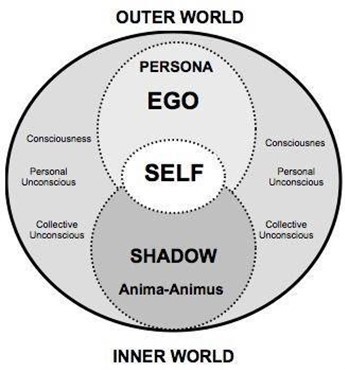
Carl Jung, far more than Freud, articulated the power of the Unconscious, and evolved the concept of the Collective Unconscious. His concepts of persona, ego, shadow, animus/anima and Self, expanded on the Freudian Id, Ego, and Superego framework, and aligned with Vedic truths of the Collective Consciousness. The journey that the Veda speak of is the journey from the multiple individual forms of persona, ego, shadow and animus/anima to the collective truth of the one Self, which is an integration of the individual and the collective. If you don’t have the time to read Jung’s work, you can go through this summary.
Almost all other modern psychological theories have been inspired by Jung. At one level, Jung raised the power of the unconscious mind, treating not merely the dumping ground of negative emotions as Freud did, but considering it as the storehouse of wisdom, both individual and collective.
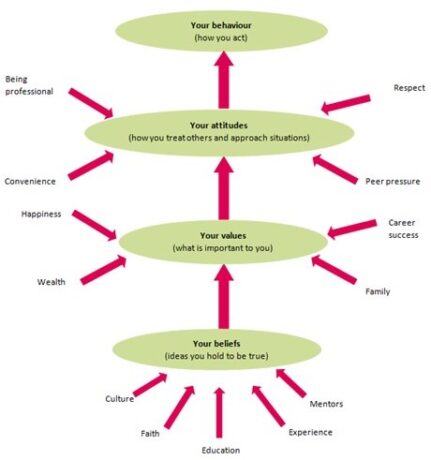
 The Freudian Iceberg model of 3 levels, with Id at the unconscious level, the Ego of learned conscious conditioning, and the Superego of the collective right and wrong at the conscious level, can be the foundational framework. Our individual minds tend to push unwanted memories deep down to protect us. Unfortunately, traumatic incidents trigger past traumas, unless relieved. Reframing such past unconscious memories through meditative re-living to relieve can be useful.
The Freudian Iceberg model of 3 levels, with Id at the unconscious level, the Ego of learned conscious conditioning, and the Superego of the collective right and wrong at the conscious level, can be the foundational framework. Our individual minds tend to push unwanted memories deep down to protect us. Unfortunately, traumatic incidents trigger past traumas, unless relieved. Reframing such past unconscious memories through meditative re-living to relieve can be useful.
At the collective unconscious and conscious levels, Jungian principles can be used to explore limiting unconscious beliefs, juxtapose them with one’s values to reframe attitudes and behaviors that no longer serve us. One can use the Beliefs, Values, Attitudes, and Behaviours framework to understand how to do this as a key step in coaching.
Some of the applications using Jungian fundamentals are:
Martin Seligman: Positive Psychology
Martin Seligman’s ABCDE model of Positive Psychology is not an expansion of Albert Ellis’ ABC model of REBT. Based on Seligman’s research outlined in Learned Optimism ABCDE is a powerful reframing tool one can coach with. This is a framework we work with at Coacharya, complementing it with our LASIE/SET framework in Coaching.
Joseph Campbell: Hero’s Journey

Joseph Campbell’s book helped me understand the archetypes of Jung. Campbell journeys through the collective mythological unconscious over history to speak of the journey to move from the individual consciousness to the collective unconscious and return with that wisdom to help expand the individual consciousness of one’s community. Campbell’s conversations with Bill Moyer are in Power of Myth, which is also available in video format.
The Hero separates from his individual consciousness seeking the initiation into the collective consciousness, in the first half of the journey. Part of this journey is unknown, unconscious, yet in a positive sense. In the second half, the initiated Hero returns to the community she/he departed from integrating the collective and individual consciousness in a selfless state of the Self. There are struggles and threats, mentors and trouble makers, and as long as the purpose is clear Hero succeeds. Each of us has been through these journeys, and rarely recognise them as the journey of a Hero.
The Hero’s Journey has no end. It’s not a circle as normally depicted. It’s an endless spiral that continues through our lives, and perhaps beyond. Reflect on this, celebrate your own journeys thus far, and get ready for the next, and then the one after.
Maslow: Need Hierarchy
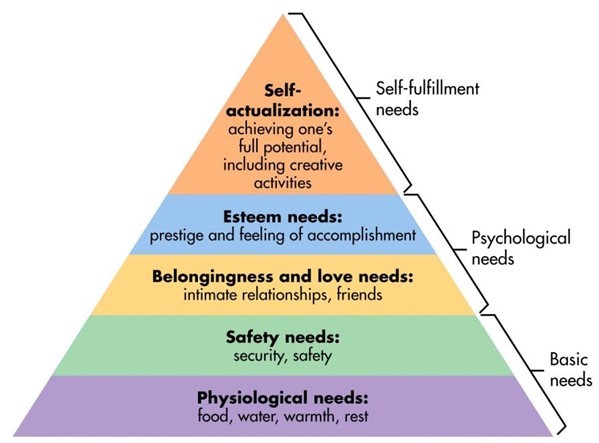
Maslow’s Need Hierarchy is far more than a ladder of needs. It has been criticized for many things it’s not meant to be. As a coach, who views coaching as a spiritual exercise, I use it as an evolutionary model. These 5 need levels of Physiological, Safety, Belonging, Esteem and Self Actualization, later expanded with Aesthetic and Transcendence, are in fact milestones in each of our Hero’s Journey.
A vast majority of us are at the level of Esteem needs at birth, born with physiological, safety, and belonging needs catered to. We seek to establish our status and recognition through comparison and competition. Until level 3, we are in a collective space. At level 4, our ego leads us to create superiority. Since we do not have a foundational strength in the earlier 3 levels, we are not stable even when we reach level 4. Each setback throws us back into lower levels. If we fail in an exam, a competition, a career state, or a relationship, we question our belonging first feeling not accepted. More setbacks question our safety. More lead us to question our survival. People contemplating suicide are in this state after a downward spiral. Someone who struggles from basic survival state to esteem state, as a refugee, for example, is far more stable than another brought up in comfort facing failure. For some, struggles and possibilities of failure are a daily occurrence. For others, these are unacceptable disasters that make life not worth living.
The only way to get out of the vicious descent is to move up to self-actualization, which again is a collective conscious state. When we self-actualize we are in service of the Universe, in the collective consciousness, with total awareness of the Self.
Kubler Ross: Change Model

The Kubler-Ross model is generally associated with grief over a loss, and also unexpected and unwanted change. The path in all these cases is the same. It starts with shock & denial, then anger & frustration, followed by bargaining for options and depression, and over time acceptance.
I have found the model to be applicable to cases on invalidation, which in my experience is the disempowering root cause of 80% of people I coach. When someone is insecure, any view other than one’s own conditioned judgmental opinion invokes multiple negative emotions of shock, denial, and anger, all triggered by invalidation. Each one of you can think of what you experience when someone contradicts you. You feel diminished. You want to hit back. This is an instinctive reaction of self-preservation at the individual Id level.
The Kubler-Ross model can be used in conjunction with other models such as Theory U, Seligman’s ABCDE, etc. to reframe the belief system that anything other than one’s own view is unacceptable and impractical. It is a collective consciousness systemic approach, which is what one needs in life.
Otto Scharmer: Theory U
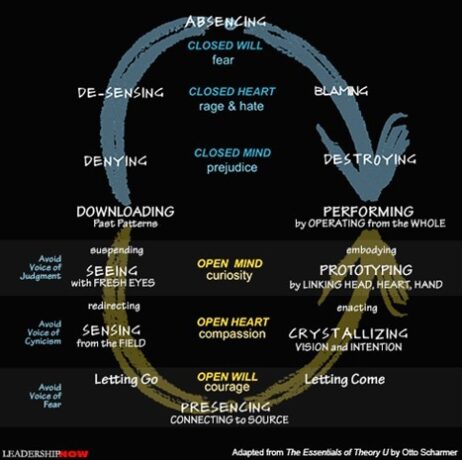
Otto Scharmer’s Theory U and U Labs address collective issues in the social, cultural, political, economic, and sustainability spaces using a listening, communicating, and coaching approach at the individual and collective levels. This is a transformational framework that has the power to shift the collective unconscious of ‘absencing’ to the collective conscious of ‘presencing’.
Don Beck: Spiral Dynamics
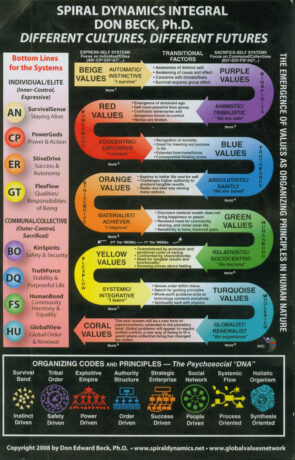
Don Beck’s Spiral Dynamics model based on Clare Graves’ work, which in turn was an evolution of Maslow, has been expanded upon by Ken Wilbur and used in organization cultural surveys by Barrett. Spiral Dynamics addresses the evolution of consciousness from a historical socio-cultural perspective.
Connie Rae Andreas: Core Transformation

Core Transformation is a framework to explore within in a systemic way that relates to our collective consciousness. I have found it useful in working with people who embrace grief and pain as an anchor, afraid to let go.
Neurobiology

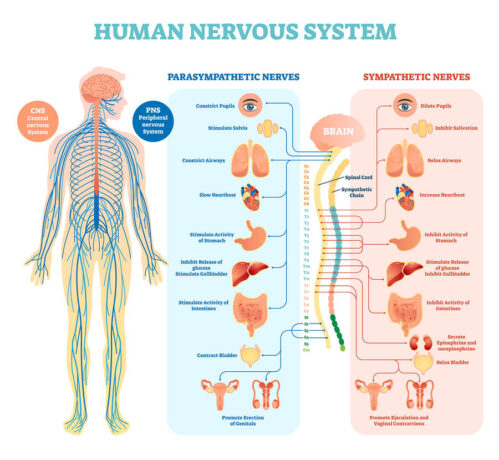
It has taken science about 5000 years to realize that the brain is not the mind. Vedic psychology described mind functions as sensory, memory, ego, and intelligence, all spread through the body-mind system as part of our cellular structure. It’s only in the last 30 years that Bruce Lipton, Candace Pert, VS Ramachandran, and others have been able to explain the mind-body connection scientifically. Polyvagal theory, HeartMath, etc. are yet to be accepted by mainstream science and are worth exploring to understand the correlation between the body and mind, somatics, and ontology.
Quantum Science & Spirituality: David Bohm & J Krishnamurti
The Limits of Thought discussions and End of Time videos between David Bohm, the Quantum Physicist, and J. Krishnamurti, the philosopher, define what may be called Quantum Spirituality. In his path-breaking book, Bohm attempts to link the microcosmic behaviour of subatomic particles with the macrocosmic behaviour of the Universe. In essence, as this article points out, Bohm talks about the futility of trying to understand the infinite truth of the Universe through the finite logic of science.
Limitations of Newtonian science of establishing anything related to nature with any degree of certainty have now been understood. However, the degree of uncertainty as articulated by Quantum Science makes the ‘truth’ seekers uncomfortable. People who wish to prove everything with theoretical ‘knowledge’ get disempowered by the contradictions of experiential ‘wisdom’. Quantum principles of ‘uncertainty’, ‘non-local entanglement’, ‘co-existence of waves and particles’, ‘aligning the microcosm with the macrocosm’ are hypotheses, not proven facts. Yet, some of the most brilliant scientists the world has known such as Einstein, Bohm, and Hawkins have endorsed these.
Lesser mortals are yet to be convinced.
Looking Into the Future

This, then, is the challenge of the present twilight for the future brilliance, as the emergence from the darkness of the past, somewhat similar to expanding Schrödinger’s Cat paradox to a larger Universe. The jury is out.
Download the PDF / ebook version of this article

